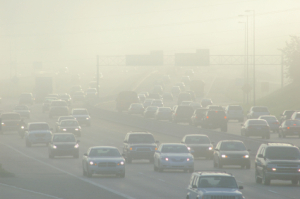EPA Proposes Strengthening Smog Standards to Protect Health
by
Astrid Fiano, DOTmed News Writer | January 15, 2010

A health hazard
In talking about health care these days, the Environmental Protection Agency (EPA) isn't usually one of the agencies prominent in discussions. However, various areas of government can be synergistic in addressing health, and the EPA has joined in by proposing what the agency calls "the strictest health standards to date for smog." Smog is also known as ground-level ozone.
According to the EPA's web information on pollutants, smog is created by chemical reactions between oxides of nitrogen and volatile organic compounds in the presence of sunlight. Typical causes of smog include industrial facilities and electric utilities emissions, motor vehicle exhaust, gasoline vapors, and chemical solvents.
Serious health concerns are connected to smog: chest pain, coughing, throat irritation, congestion, aggravating existing conditions of bronchitis, emphysema, and asthma, reduction in lung function and inflammation of lung linings, and risk of permanent scarring of lung tissue. The persons most at health risk from smog are children, because their lungs are still developing and because they are more likely to suffer from asthma. Older adults and adults with lung conditions are also at-risk populations for ozone. Effects of smog can lead to emergency room visits and hospital admissions for respiratory causes, and even possibly cardiovascular-related morbidity, as well as total non-accidental and cardiopulmonary mortality.
The EPA's proposal would replace the standards set by the previous administration, which many believe were not strong enough in protecting health. The agency is proposing to set the "primary" standard to O3, which protects public health, at a level between 0.060 and 0.070 parts per million (ppm) measured over eight hours. The EPA's reconsideration of existing ozone standards involved reviewing over 1,700 scientific studies and public comments from a 2008 rule making process. The Agency also reviewed conclusions from the independent Clean Air Scientific Advisory Committee (CASAC), which recommended the proposed standards. CASAC has provided independent advice to the EPA Administrator on the technical bases for EPA's national ambient air quality standards since being established in 1977 under the Clean Air Act Amendments of 1977. According to its Web page, CASAC also addresses research related to "air quality, sources of air pollution, and the strategies to attain and maintain air quality standards and to prevent significant deterioration of air quality."
